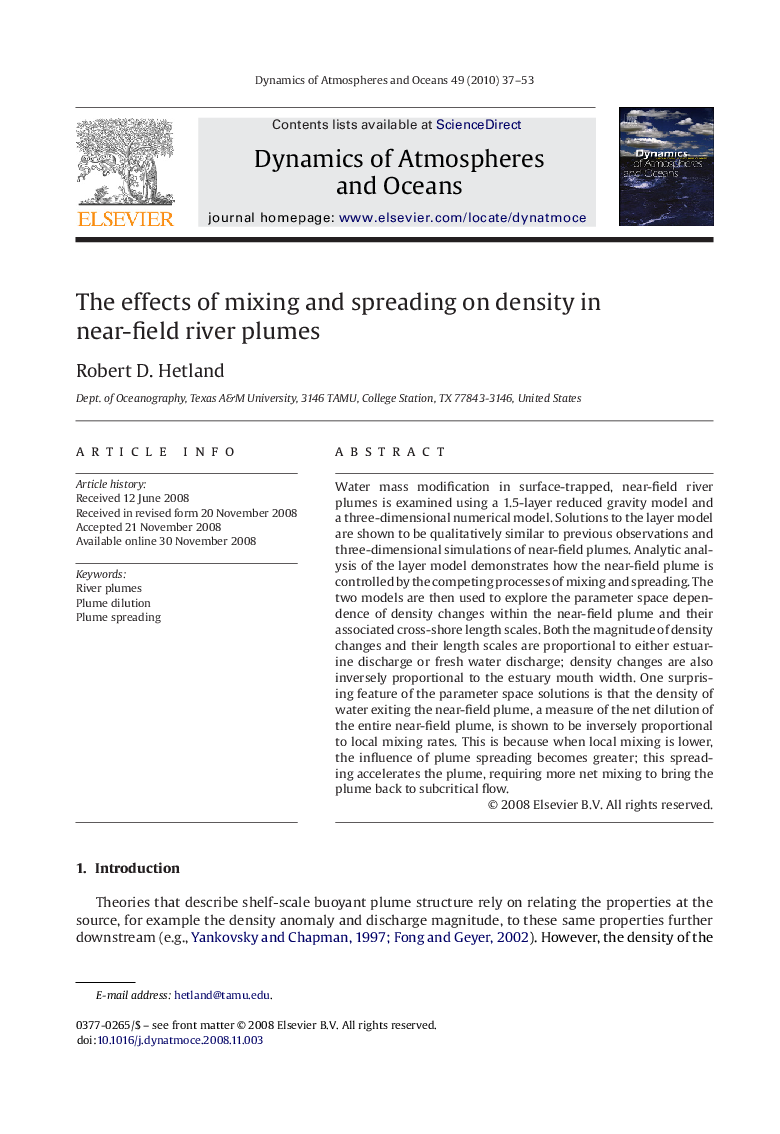| Article ID | Journal | Published Year | Pages | File Type |
|---|---|---|---|---|
| 4674217 | Dynamics of Atmospheres and Oceans | 2010 | 17 Pages |
Water mass modification in surface-trapped, near-field river plumes is examined using a 1.5-layer reduced gravity model and a three-dimensional numerical model. Solutions to the layer model are shown to be qualitatively similar to previous observations and three-dimensional simulations of near-field plumes. Analytic analysis of the layer model demonstrates how the near-field plume is controlled by the competing processes of mixing and spreading. The two models are then used to explore the parameter space dependence of density changes within the near-field plume and their associated cross-shore length scales. Both the magnitude of density changes and their length scales are proportional to either estuarine discharge or fresh water discharge; density changes are also inversely proportional to the estuary mouth width. One surprising feature of the parameter space solutions is that the density of water exiting the near-field plume, a measure of the net dilution of the entire near-field plume, is shown to be inversely proportional to local mixing rates. This is because when local mixing is lower, the influence of plume spreading becomes greater; this spreading accelerates the plume, requiring more net mixing to bring the plume back to subcritical flow.
